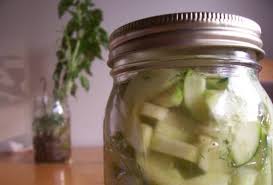
Fermentation has long been known to be an excellent way to preserve food, often being used to ensure that vitamin-rich foods can be served fresh, regardless of when the food was first harvested. According to traditional Chinese medicine there are actually five different flavors of fermented food: sweet, salty, sour, bitter, and pungent. Each flavor corresponds with a specific type of effect and all five need to be consumed in a balanced setting for optimal health. Not only are fermented foods high in vitamins and minerals, but they also provide the body with beneficial microflora that are essential for maintaining a healthy digestive system.
The philosophy believes that each type of flavor points to a specific aspect in the food. For example, fermented vegetables have a distinctive sour flavor that corresponds to a specific element in the vegetable that is believed to benefit the liver and gallbladder. Author Sandor Ellix Katz, the author of the book Wild Fermentation, specifically credits fermented foods as being the sole reason for his superior health and energy, despite having lived with AIDS for many years.
The scientific explanation behind fermented foods is fairly simple. Cultured vegetables contain many healthy bacterial cultures, such as lactobacillus. Pursuant to numerous clinical studies, the more healthy types of microflora an individual has within their body the stronger their immune system, and the better the receptors in the body will function when exposed to dangerous bacteria and viruses. Not only are fermented vegetables high in healthy bacteria, but they are also high in antioxidants. They assist the body in breaking down and preserving nutrients, as well as stimulating the creation of new cultures within the body, which form numerous types of vitamin B, such as folic acid, niacin, and thiamin. Additionally, fermented grains help to remove toxins from food, such as phytic acid, which can block the absorption of calcium and iron. Fermented grains function as a neutralizer of this acid.
One of the most common types of fermented foods is sauerkraut, which is essentially nothing more than fermented cabbage. Pickles are another form of fermented food, as well as carrots, scallions, onions, broccoli and cauliflower. All that is necessary is to chop or slice a chosen vegetable into tiny pieces, mix them in a large bowl, apply salt and stir. As you stir, the salt helps to release the liquid residing inside the vegetables. Pour the mixture into a jar - vegetables generally require a minimum of four to seven days to ferment. Open the jar daily to release pressure and check the flavor, then store in the refrigerator once it has achieved the desired taste.
No comments:
Post a Comment